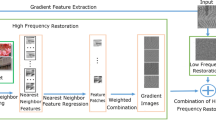Abstract
Scattering transform has many advantages and has been widely used in various fields since proposed. An algorithm using machine learning was proposed by some developers of Kymatio to reconstruct the signal based on the Scattering transform of the signal on the internet (Reconstruct a synthetic signal from its scattering transform (DB/OL) https://www.kymat.io/gallery_1d/reconstruct_torch.html#sphx-glr-gallery-1d-reconstruct-torch-py and Andreux et al. https://arxiv.org/1812.11214, 2019). In this paper, I improve this reconstruction algorithm to an efficiency-based algorithm. However, the coefficient in the original formula for the input signal is defined and followed by original gradient descent algorithm with the learning rate multiplied by an accelerator or braker for every iteration. Once the error is spotted out then the system is discarded. By introducing an efficiency parameter, the calculation time and the eliminated error are linked, so that coefficient can be determined to improve the efficiency and eliminated most errors in a short time. Also, the experimenter can adjust the importance parameter in the efficiency parameter to determine the importance of speed and accuracy, which provides the experimenter with more choices.




Similar content being viewed by others
Data Availability
None.
References
The Mathwork, Inc., Wavelet Scattering. https://ww2.mathworks.cn/help/wavelet/ug/wavelet-scattering.html. Accessed 28 Feb 2021
Mallat, S. "Group Invariant Scattering." Communications in Pure and Applied Mathematics.. Vol. 65, Number 10, 2012, pp. 1331–1398.
Bruna, J., and Mallat S. "Invariant Scattering Convolution Networks."IEEE Transactions on Pattern Analysis and Machine Intelligence. Vol. 35, Number 8, 2013, pp. 1872–1886.
Andén, J., and Mallat S. "Deep Scattering Spectrum." IEEE Transactions on Signal Processing. Vol. 62, Number 16, 2014, pp. 4114–4128.
Mallat, S. "Understanding deep convolutional networks." Philosophical Transactions of the Royal Society A. Volume 374: 20150203, 2016, pp. 1–16. https://doi.org/10.1098/rsta.2015.0203.
Lostanlen, V. Scattering.m. A MATLAB toolbox for wavelet scattering. https://github.com/lostanlen/scattering.m. Accessed 28 Feb 2021
Andén J., Lostanlen V. and Mallat S. “Joint Time–Frequency Scattering.” IEEE Transactions on Signal Processing. Vol. 67, Number 14, July 15, 2019, pp.3704–3718.
Gupta, R., Khari, M., Gupta, V., Wu, E. V., Herrera-Viedma, E., & Crespo, R. G. (2020). Fast Single Image Haze Removal Method for Inhomogeneous Environment Using Variable Scattering Coefficient. Computer Modeling in Engineering & Sciences, 123(3), 1175-1192. https://doi.org/10.32604/cmes.2020.010092’.
Lopez, D., & Manogaran, G. (2018). Health data analytics using scalable logistic regression with stochastic gradient descent. International Journal of Advanced Intelligence Paradigms, 10(1/2), 118. https://doi.org/10.1504/ijaip.2018.10010530.
The Kymatio Developers, Reconstruct a synthetic signal from its scattering transform. https://www.kymat.io/gallery_1d/reconstruct_torch.html#sphx-glr-gallery-1d-reconstruct-torch-py. Accessed 28 Feb 2021
Andreux M., Angles T., Exarchakis G., Leonarduzzi R., Rochette G., Thiry L., Zarka J., Mallat S., Andén J., Belilovsky E., Bruna J., Lostanlen V., Hirn M. J., Oyallon E., Zhang S., Cella C., Eickenberg M. (2019). Kymatio: Scattering Transforms in Python. arXiv preprint https://arxiv.org/1812.11214.
The Kymatio Developers, User Guide. https://www.kymat.io/userguide.html. Accessed 28 Feb 2021
Waldspurger I., “Exponential decay of scattering coefficients,” in Proc. Sampling Theory Appl. Conf., 2017, pp. 143–146.
Kengo Tateishi. The Mathematics of Machine Learning in the vernacular. Beijing, China, Posts and Telecom Press, 2020, pp. 15-58
Author information
Authors and Affiliations
Corresponding author
Ethics declarations
Conflict of interest
No conflict of interest.
Additional information
Publisher's Note
Springer Nature remains neutral with regard to jurisdictional claims in published maps and institutional affiliations.
Rights and permissions
About this article
Cite this article
Zhang, K. An Efficiency-Based Improvement of a Reconstruction Algorithm Reconstructs Signal from Its Scattering Transform. Int J Wireless Inf Networks 30, 111–118 (2023). https://doi.org/10.1007/s10776-021-00526-7
Received:
Revised:
Accepted:
Published:
Issue Date:
DOI: https://doi.org/10.1007/s10776-021-00526-7




